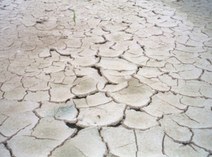Drought monitoring by assimilating satellite observations into hydrological models

A first step in understanding drought is to monitor its occurrence.
Because of the spatio-temporal behaviour of droughts and the lack of dense monitoring networks in the field, land surface models are often used to estimate soil moisture, as this variable is vital for agricultural productivity, and often more meaningful than simple precipitation indices.
What we do
We evaluate to which extent the assimilation of raw satellite observations, i.e. backscatter from active radar sources or brightness temperatures from radiometers, can improve soil moisture simulations of such models and correct for errors in other input data, such as precipitation.
We therefore carry out experiments with both highly complex models requiring High-Performance Computing infrastructure as well as fast and simple models.
The complex models are used by the climate modelling community and useful for coupled land-atmosphere simulations and forecasts.
More simple models are useful for local stakeholders within a more operational context.
